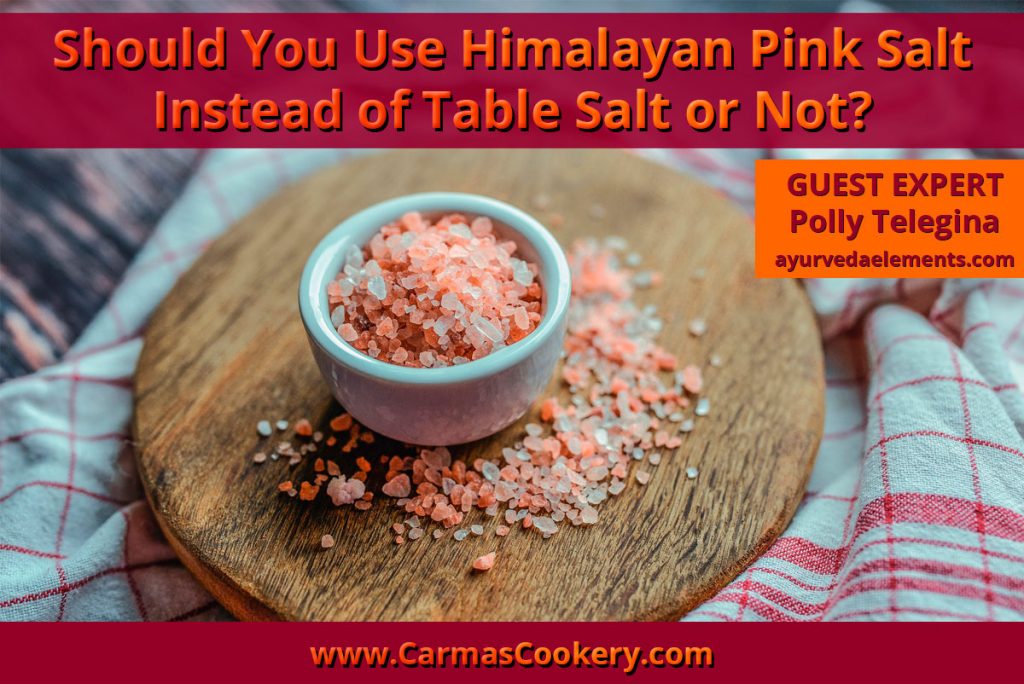By Polly Telegina
Sodium imbalance can cause several health concerns such as high blood pressure, osteoporosis, etc… However, all of this can be prevented with just one effective measure — replacing table salt with Himalayan pink salt. After all, a tablespoon of regular table salt contains around 2300 mg of sodium, which is the maximum daily limit. According to studies, an average person consumes salt all through the day. It is either used to add flavor to the food or added as a preservative.
Therefore, to prevent sodium imbalance, one needs to keep the overall consumption under check. You can do this by limiting processed foods like canned food, instant soups, pickles, and snacks like potato chips and salted nuts. In fact, even before you substitute table salt with Himalayan pink salt, you need to do some hardcore research. That’s because you need to have a thorough understanding of Himalayan pink salt and its health risks.

What causes Sodium imbalance?
Presently, a busy lifestyle makes it impossible to eliminate processed foods from your everyday diet. After all, canned foods and cereals are a way of life since those are time-saving, economical and easy to store. However, you must limit them as it contains natural preservatives like salt that can considerably increase sodium levels in the body.
So, it only makes sense to reduce the amount of sodium consumed through table salt. Therefore, health experts recommend substituting table salt with Himalayan pink salt, which is said to be lower in sodium and serves the same purpose. Doing this reduces the overall sodium intake and brings down the possibilities of health risks associated with it.
Do you need Sodium?
Despite all the health risks associated with sodium, it plays a critical role in several bodily functions. It regulates bodily fluids and influences blood pressure. Also, it influences the way nerves respond to a certain situation. Hence, eliminating sodium entirely from the diet or even reducing its intake considerably, can prove to be quite dangerous. Some health risks associated with low sodium levels include fatigue, bodily weakness, foggy mind, muscle cramps, etc… Conversely, overconsumption can lead to health issues such as kidney-related health concerns, hypertension, osteoporosis, etc… So, there is a sheer need to strike a balance and consume it in the right quantity.
What is Himalayan Pink Salt?
Himalayan pink salt is a mineral-rich compound that was formed by the evaporation of shallow seawater, and intense geological pressure. These deposits have formed over a period of 250 million years. The Himalayan pink salt gets its name from its crystalline properties and the region where it is available — the Himalayas. Its pinkish hue is a result of over 84 trace minerals which make the Himalayan pink salt a nutrient-dense health food. It is a nutrient-dense food that contains calcium, iron, magnesium and several other beneficial nutrients. You can use it in everyday cooking or for seasoning your salads and add a mineral-packed punch to it.
The Himalayan salt is available in the form of chunks or blocks that can be used for cooking and other purposes. It can be powdered and substituted with regular salt or can be used in the form of ‘Sole’ which is made by dissolving these Himalayan pink salt chunks in water. You can then use it in your recipes without losing out on its nutrients. No matter how you use it, make it a point to avoid overconsuming it. However, the Himalayan pink salt is non-renewable, but since it is available in abundance, it can be mined for several hundred years. Currently, it is mined from the Salt Range in Punjab, Pakistan which extends to about 185 miles.
Himalayan Pink Salt Health Risks and Benefits
Himalayan pink salt’s health risks include sodium imbalance which can cause cardiac health issues, hypertension, and osteoporosis. Therefore, it must be consumed in moderation and while the maximum sodium intake limit is set to 2300 mg per day, it could be much lesser depending on pre-existing medical conditions. So, you need to have a word with your medical practitioner regarding the same.
Most Health Experts recommend substituting table salt with Himalayan pink salt because it is much lower in sodium and contains beneficial trace minerals. However, as in the case of table salt, it is strongly recommended that you limit it. When consumed in the right quantities, there are several health benefits that come with the Himalayan Pink salt such as electrolyte balance, balanced pH, increase in metabolic function, and stronger bones.
Although some Experts recommend eliminating all types of salts from the diet, we do not. That’s because sodium plays a pivotal role in regulating bodily fluids which is essential for the body. However, it does not taste like the regular table salt and you need to develop a taste for it before entirely substituting it with table salt. You could start by sprinkling some on your salads and fruits to feel the difference, and then replacing it with table salt. So, with a little compromise, you can greatly benefit from its mineral-rich properties. However, have a word with your General Physician before making the shift — especially if you suffer from depression, heart-related health concerns, hypertension or kidney-related issues.
About Polly Telegina
 I am a holistic health expert from Siberia. Ayurveda, yoga and Himalayan shilajit are the main areas of my knowledge. Deeply intuitive I find that true healing surpasses the boundaries of the physical body and embraces the emotional, energetic and subtlest layers of our being. I help people to know how to be healthy and beautiful using only natural remedies. I believe that nature is the best source of human health. To know more, check my blog about elements of Ayurveda.
I am a holistic health expert from Siberia. Ayurveda, yoga and Himalayan shilajit are the main areas of my knowledge. Deeply intuitive I find that true healing surpasses the boundaries of the physical body and embraces the emotional, energetic and subtlest layers of our being. I help people to know how to be healthy and beautiful using only natural remedies. I believe that nature is the best source of human health. To know more, check my blog about elements of Ayurveda.

What is the secret to a long and healthy life?
It is in the food that we eat. As you well know, all foods are not created equal. Choosing and eating the right foods may help increase your life expectancy as well as the quality of your life.
I’ve created a quick and easy guide to 10 of the top power-packed foods designed to give you energy, vitality, and all-around good health. Incorporate these foods into your meals and you’ll improve your health.


8 comments on “Should You Use Himalayan Pink Salt Instead of Table Salt or Not?”